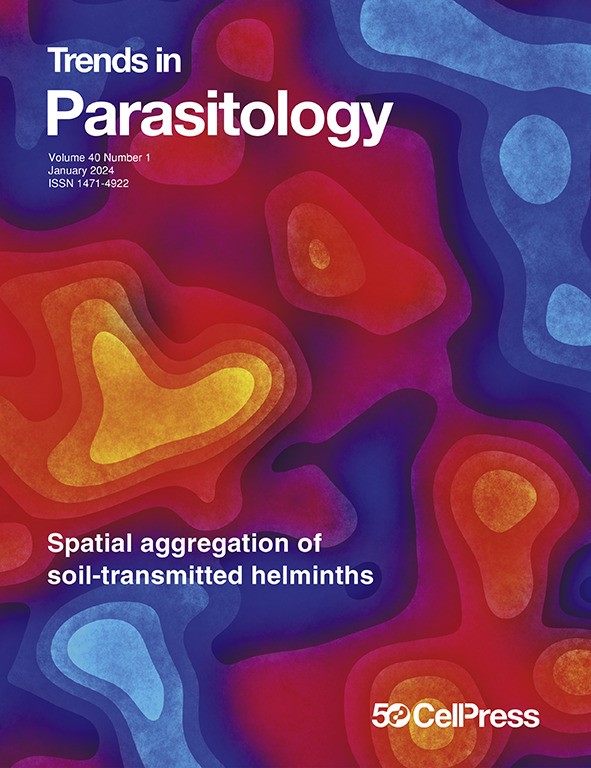水稻二萜重组微生物群以对抗植物寄生线虫。
IF 6.6
1区 医学
Q1 PARASITOLOGY
引用次数: 0
摘要
与植物根系相关的微生物可以保护宿主免受植物寄生线虫的侵害。Kudjordjie等人最近证明,水稻二萜类植物抗毒素参与了抑制线虫的有益根系微生物群的组装。植物化学介导的植物-微生物相互作用调节的发现为线虫的可持续管理提供了一种创新的方法。本文章由计算机程序翻译,如有差异,请以英文原文为准。
Rice diterpenoids rewire microbiome to fight plant-parasitic nematodes.
Microorganisms associated with plant roots can protect the host from plant-parasitic nematodes. Kudjordjie et al. recently demonstrated that rice diterpenoid phytoalexins are involved in the assembly of beneficial root microbiota for nematode suppression. The discovery of phytochemical-mediated modulation of plant-microbe interactions offers an innovative approach to sustainable nematode management.
求助全文
通过发布文献求助,成功后即可免费获取论文全文。
去求助
来源期刊

Trends in parasitology
医学-寄生虫学
CiteScore
14.00
自引率
3.10%
发文量
148
审稿时长
6-12 weeks
期刊介绍:
Since its inception as Parasitology Today in 1985, Trends in Parasitology has evolved into a highly esteemed review journal of global significance, reflecting the importance of medical and veterinary parasites worldwide. The journal serves as a hub for communication among researchers across all disciplines of parasitology, encompassing endoparasites, ectoparasites, transmission vectors, and susceptible hosts.
Each monthly issue of Trends in Parasitology offers authoritative, cutting-edge, and yet accessible review articles, providing a balanced and comprehensive overview, along with opinion pieces offering personal and novel perspectives. Additionally, the journal publishes a variety of short articles designed to inform and stimulate thoughts in a lively and widely-accessible manner. These include Science & Society (discussing the interface between parasitology and the general public), Spotlight (highlighting recently published research articles), Forum (presenting single-point hypotheses), Parasite/Vector of the Month (featuring a modular display of the selected species), Letter (providing responses to recent articles in Trends in Parasitology), and Trendstalk (conducting interviews). Please note that the journal exclusively publishes literature reviews based on published data, with systematic reviews, meta-analysis, and unpublished primary research falling outside our scope.
 求助内容:
求助内容: 应助结果提醒方式:
应助结果提醒方式:


